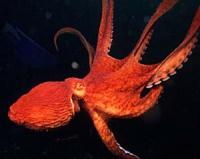
Champagne...
#1

Posted 18 April 2010 - 08:39 PM
#2

Posted 18 April 2010 - 10:03 PM
yes you canIt can be produced using the traditional Méthode Champenoise, where a still white wine is allowed to undergo secondary fermentation in the bottle, or by carbonating in a seperate vessell then CPBing.both methods are difficult to achieve for their own reasons.I have not tried either, but have read a couple of articles over the years by homebrewers who have.and Guest is right the name "Champagne" is strictly protected under international law.it would be "sparkling wine"Can you make it? My quick Google-fu hasn't produced anything helpful yet.
#3

Posted 19 April 2010 - 04:56 AM
Edited by HarvInCoMo, 19 April 2010 - 05:10 AM.
#4

Posted 19 April 2010 - 03:34 PM
I could be wrong, but I believe I have seen commercial product from countries other than France (clearly not from the Champagne region) and that have the description of Champagne. True, most of the time I have seen "sparkling wine" in place of Champagne.I guess I will have to make a trip through the Sparkling Wine?Champagne section of BevMo tonight and see if my memory serves me correctly.and Guest is right the name "Champagne" is strictly protected under international law.it would be "sparkling wine"
#5

Posted 19 April 2010 - 07:39 PM
#6

Posted 19 April 2010 - 09:28 PM
#7

Posted 20 April 2010 - 12:51 PM
#8

Posted 21 April 2010 - 06:15 PM
I'll try it someday as well, I keep telling myself thatoh and BTW Walla Walla's are better, lolYup, first it's Champagne, then the next thing you know they'll tell ya what you can and can't call an onion.....wait a minute, they already have! Free the Vidalias!!!However, back on topic, let us know how your "Champipple" turns out. I've always wanted to try that. There are a couple good books out there [not in my library so I don't have the immediate reference] that make it look extremely involved. Personally, my first attempt will likely be the technique that leaves the lees in the bottle.......
#10

Posted 01 May 2010 - 01:13 AM
#11

Posted 01 May 2010 - 11:29 AM
0 user(s) are reading this topic
0 members, 0 guests, 0 anonymous users













